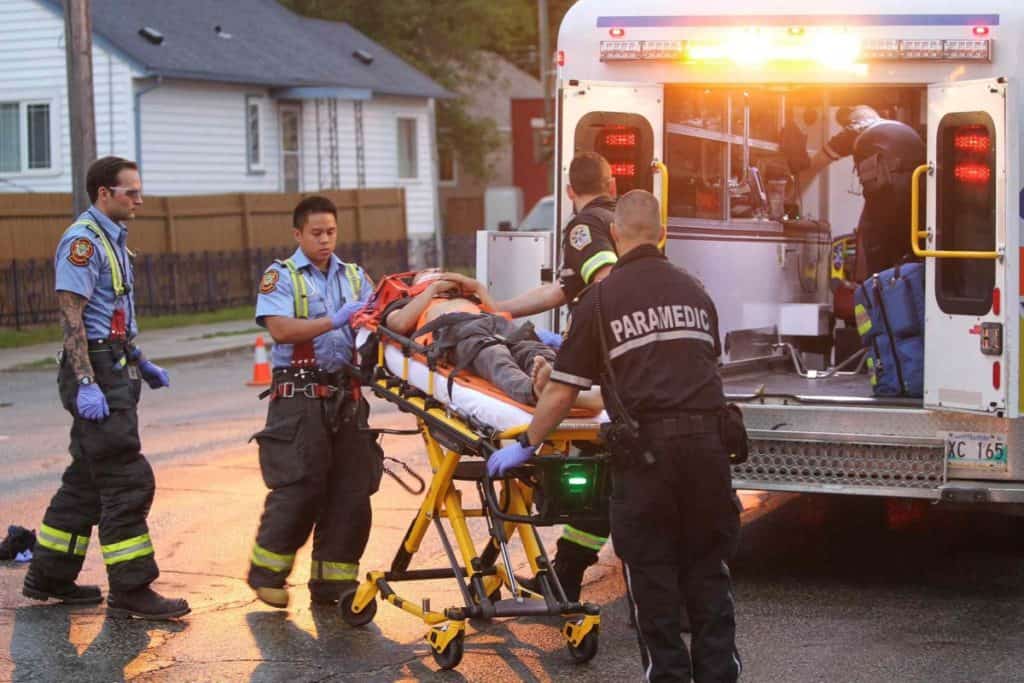
Why do Fire trucks respond go to medicals calls? This common question is asked daily by the citizens we serve. With the growing challenge to justify the cost of funding emergency response resources this has become an important question to understand. The answer may surprise you.
Why do Fire trucks respond go to medicals calls? Fire Stations are placed strategically throughout their service area. This standard in coverage provides the quickest initial medical assistance to the patient. Ambulances are typically placed in a status management system causing the ambulances to constantly move to cover the busier areas. This often delays thier response.
I often also hear “Isn’t sending an expensive fire truck with all those Firefighters an expensive waste of resources?” The answer is no, let’s discuss why.The fire service is designed to provide the best service possible to their community by strategically placing fire stations throughout their service area. The response times and coverage standards are developed by national standards such as the National Fire Protection Association, NFPA, and the Insurance Services Office, ISO. Because of this response model, the closest fire station is often faster than an ambulance allowing quicker initial care for the patient.
The ambulance delivery model is based on keeping ambulances busy providing care and moving patients as efficiently as possible. Operating an ambulance service is very expensive. It’s vital to keep ambulances and crews working effectively and efficiently. I compare it to the airlines, they don’t make money if they are not moving passengers. This sounds greedy but ambulances have to operate this way to survive. Most private or hospital based ambulance services place ambulances in a status management model. What this means is they will move ambulances to cover busier areas as emergency and non-emergences calls for service move ambulance in and out of the service area. Basically its a systematic game of chess based on data.
The second reason is to assist in patient care. Managing a complex medical call such as a heart attack takes a lot of skilled people. To effectively manage a cardiac arrest call it takes four skilled individuals. Having a three person fire crew and a two person ambulance crew is a perfect number to manage the medical incident while providing great care for the patient.
Are Firefighters Trained for Providing Medical Care?
The short answer is yes. Most firefighters, both career and volunteer, will have some level of medical training. There are, however, a few departments that do not respond to medical calls. This is very, most firefighters are trained to an Emergency Medical Technician, EMT, Level. More and more departments are moving to Advanced Life Support, training firefighters to a Paramedic level.
The fire service is always striving to develop service delivery models that provide great service while being cost effective. We are now seeing systems where the paramedics are on the fire truck while EMTs are on the ambulances. More communities are seeing their fire departments operating their ambulances.
Just Get More Ambulances?
This sounds like an easy fix to the coverage issues many services face, however, its usually the last step in trying to balance good service while staying cost effective. The reason is because of cost. Placing one ambulance into service for an existing response system comes with a large price tag. The ambulance alone with all the equipment will cost 250 to 300 thousand dollars. Then you have the staffing and daily operational costs.
Why Don’t All Fire Departments Have Ambulances?
Actually many fire departments do operate ambulances. Fire based ambulance services are becoming much more common. This service delivery model supports a system that has better coverage while reducing some of the pressure to keep the ambulances on the road to make revenue. A fire based ambulance service does bill for service. However, it also is often subsidized my tax revenue to help offset the cost to operate.
Isn’t There a Better Way Than Sending a Fire Truck?
The traditional model of sending a fire truck covers the need for quicker response and more help on scene. The fire crew can also get back into service quicker for any fire call due to the fact that the truck with all the equipemnt came on the medical call with them.
With that being said, we are starting to see changes to the model. Some systems are now using smaller vehicles with less fire personnel to response to a medical call with the ambulance to help reduce the cost and wear and tear on the expensive apparatus.
These models have promise, however they do create other challenges such as getting fire crews back in service for fire response quickly.
Today’s firefighter must be well trained in both the emergency medical and fire suppression / rescue aspect of the career.
